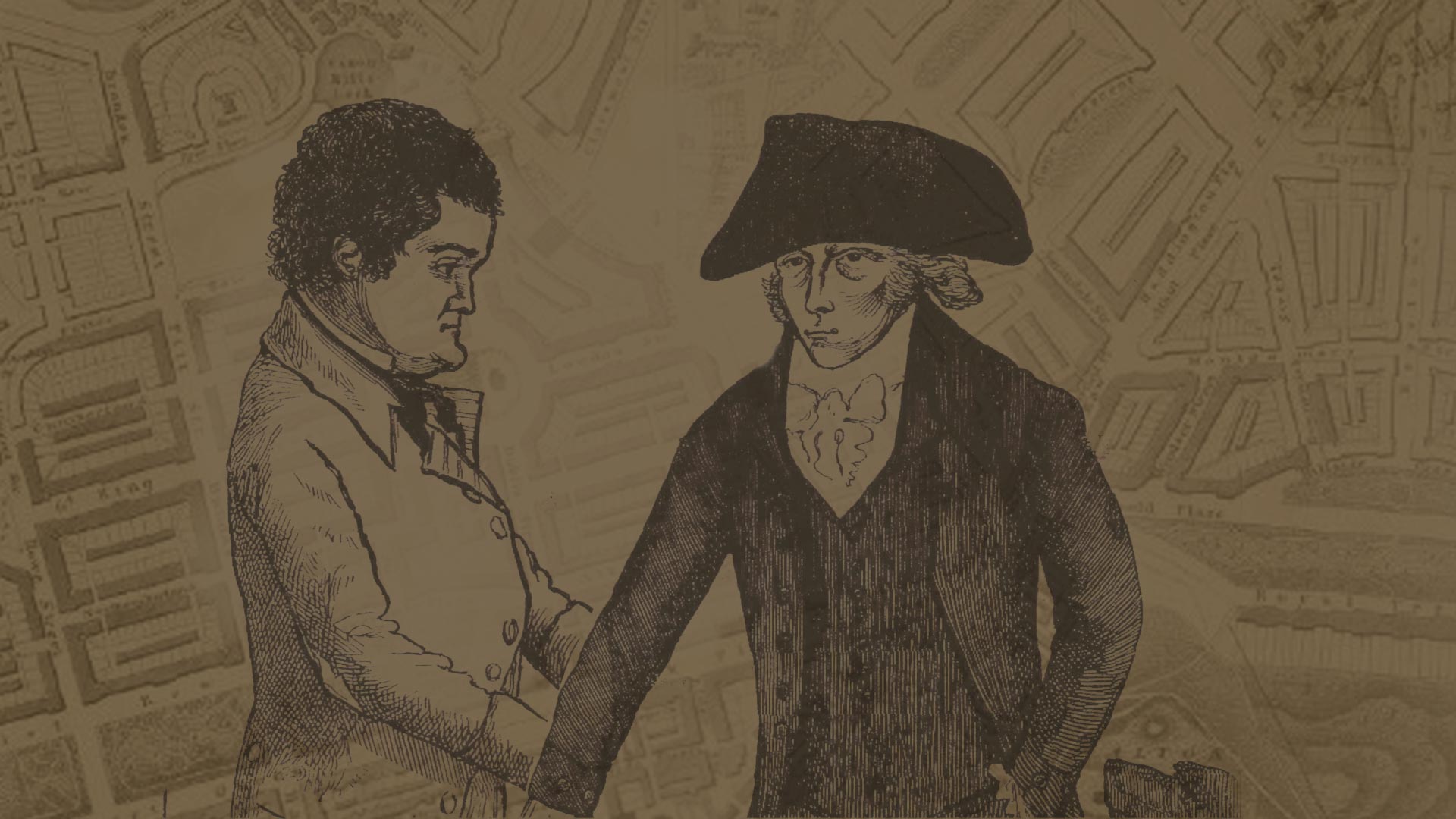“Burke's the butcher, Hare's the thief,
Knox the boy that buys the beef.”
A 19th Century nursery rhyme.
Edinburgh’s most infamous duo, Burke & Hare live large in the popular imagination. They’ve been the subject of countless films, books and tours, and to this day their legacy casts a dark shadow over the city’s old town.
Perhaps Edinburgh’s most prolific ‘serial killers’, long before the phrase was ever coined, Burke and Hare were driven by the lure of quick money - supplying fresh corpses to the city’s anatomy schools without ever having to rob a single grave.
This article contains everything you need to know about this fascinatingly morbid period of anatomy murder. For a more immersive way to follow in the pair’s bloody footsteps, check out our outdoor escape room: “A Trail of Burke & Hare”.
Who were Burke & Hare
William Burke & William Hare were two Irish immigrants who arrived in Edinburgh in the 1820s to find a city amid the industrial revolution. Both found work as “navvies” manual labourers helping to construct the Union Canal.
However, it was only after the work dried up that they met one another and formed a fast friendship. Hare invited Burke, along with his common-law wife, Helen McDougal, to join him in his lodging house on Tanners Close which he shared with his own wife -Margaret Laird.
Tanner’s close was a leather and shoemaking area in Edinburgh’s West Port district – a dirty and overcrowded place close to the throng of the city’s Grassmarket, where the rocky outcrop of Edinburgh Castle was a constant, looming presence.
Opportunities were scarce, yet Hare’s boarding house seems to have done a reasonable trade, offering transient accommodation to passing labourers. Burke returned to his former profession as a cobbler and was by said to be a pleasant and good-humoured chap keen on religion. Descriptions of Hare are less generous, most portray him as a gaunt, vulgar man who was prone to violent outbursts.
By all accounts, drink was their main vice. Burke & Hare and their wives would regularly be seen stumbling out of the drinking dens of the Grassmarket and back to the lodging house where a raucous would continue late into the night.
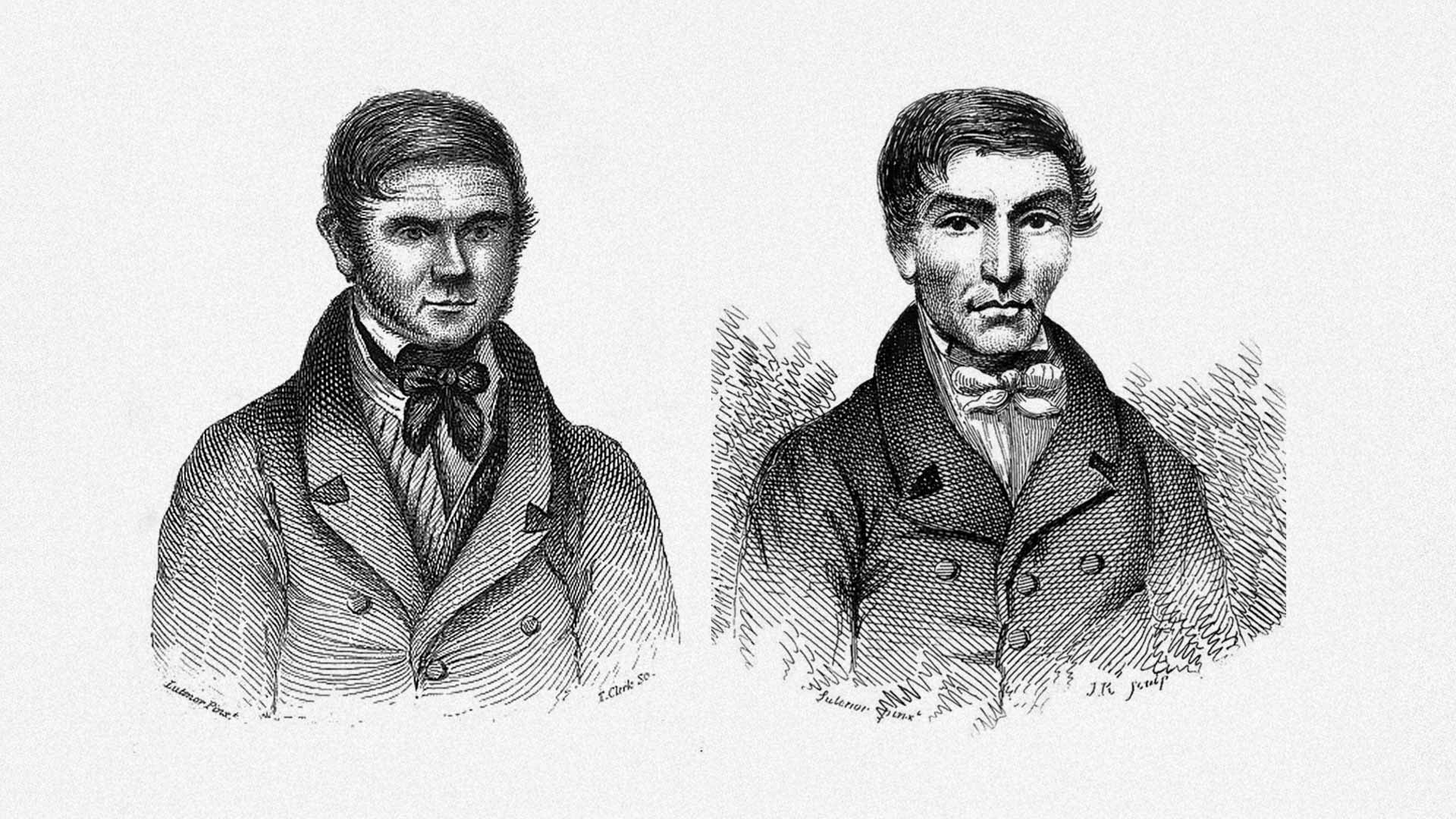
Early 19th Century Edinburgh’s Medical Boom
The story of Burke & Hare takes place in the context of Edinburgh’s ascent as one of Europe’s leading centres of medical study. Human bodies, a necessity for anatomical dissection, were in ever-short supply. Anatomists were willing to pay a hefty sum for quality cadavers, without asking too many questions.
This paved the way for a wave of grave robbery in Edinburgh with gangs of “resurrectionists” stalking the city’s graveyards at night to dig up the newly deceased for sale to the many nearby Anatomy schools. The trade peaked in the mid 1820s – just as Burke and Hare were settling into their life in the West Port.
For a visceral sense of what the Grave-Robbery era Edinburgh was like, we dare you to try our award-winning escape room: The Anatomist.
How did Burke & Hare become “Body Snatchers”?
Although not grave robbers in the traditional sense (they never actually robbed a grave), Burke and Hare are synonymous with the body snatching period as they found an even more sinister way to meet this ever-increasing demand for fresh corpses.
It all started in 1827 after an elderly tenant of Hare, named Donald, passed away while owing the landlord for unpaid rent. The pair decided to recoup their loss by selling the poor old man’s body to an anatomist.
Not quite sure where to find one, they initially wandered the city in search of Dr Munro (Edinburgh University’s famous professor of anatomy), before unwittingly receiving directions to the school of Dr Knox in Surgeon’s Square.
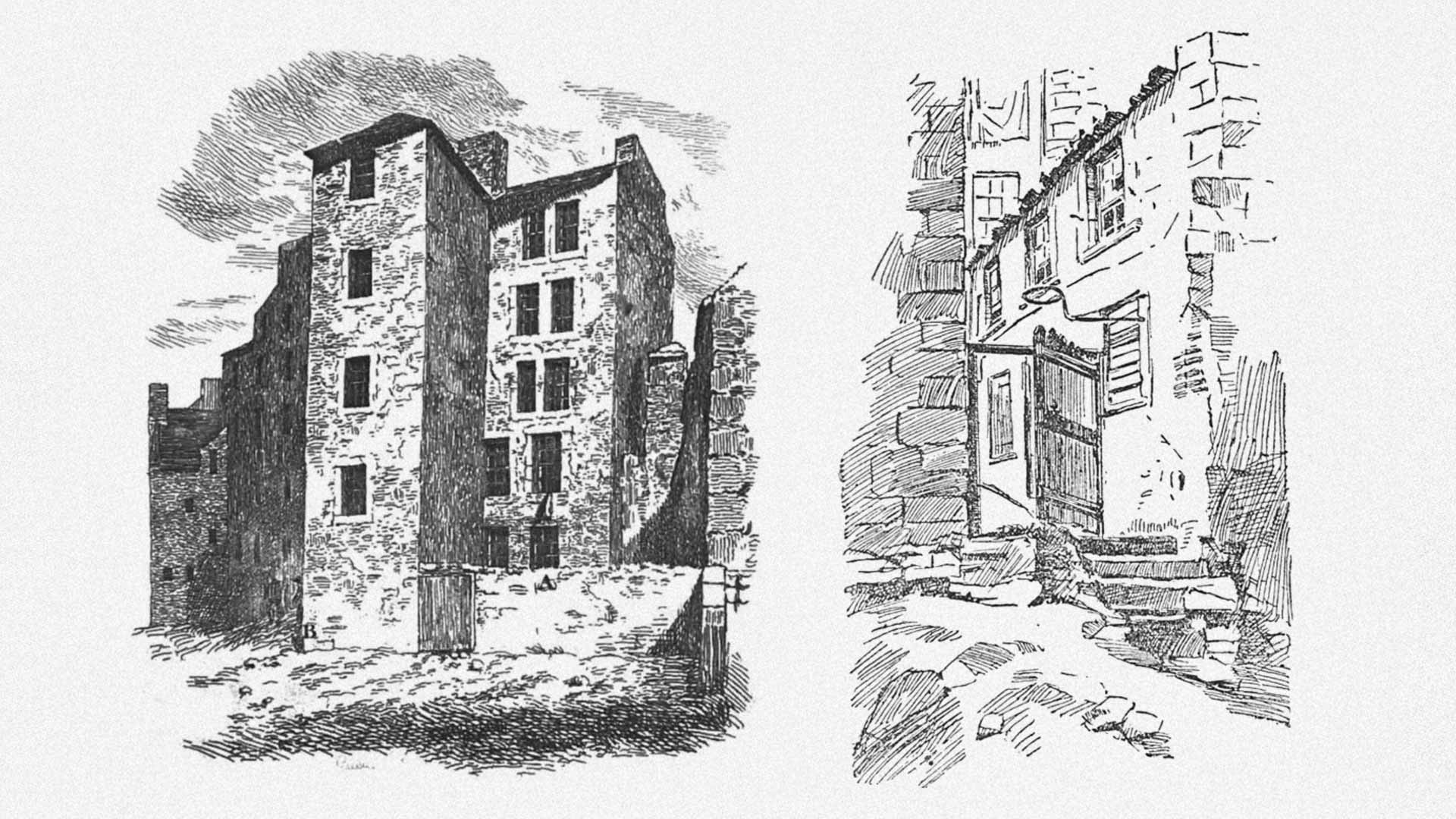
Who was Dr Knox?
Dr Robert Knox was one of Edinburgh’s leading anatomists at the time and the purveyor of one of the city’s extra-mural anatomy schools based in Surgeon’s Square to the South East of the City Centre.
He was well respected and just a little feared. Knox is infamous for his connection to the story of Burke & Hare and while never convicted of any active part in their crimes, he was more than willing to accept the bodies brought to him with no questions asked.
For their first cadaver, Doctor Knox is said to have paid £7 10s (the equivalent to several month’s wages) and supposedly hinted that he would gladly do business with them again in the future…
Why did Burke & Hare turn to Murder?
Burke and Hare appear to have been taken a-back by the ease and speed with which they could attain such a sum of money. From this point forward, they were surely on the lookout for similar opportunities.
Months passed until in early 1828 such a prospect would present itself. Another lodger, a young man named Joseph, was struck down with a fever. Suffering but still very much alive, Burke and Hare took the opportunity to hasten his demise with a pillow held over the face. This cadaver generated a profit of £10 and firmly set the pair down their murderous path…
Who were the Victims of Burke & Hare
Burke and Hare are believed to have killed at least 16 people during 1828 in a spree that became known as The West Port Murders. Most of their victims were poor, vulnerable, and socially overlooked - people unlikely to be missed or investigated too thoroughly.
Fellow Irish immigrants appear to have been a favourite source of prey, their common homeland making it all the easier to build a rapport.
It is perhaps unsurprising that not all the victims are known by name, and while Joseph was almost certainly the first, the order of the remaining 15 is somewhat unclear, due in part, to contradicting testimonies provided in the run up to their eventual trial.
However, the unfortunate souls are believed to have included:
Abigail Simpson (Feb 1828) A travelling salt seller, lured with the promise of whisky.
Mary Paterson (April 1828) An attractive young woman of around 18 who may or may not have worked as a prostitute. She and her friend Janet Brown were enticed from a tavern. Janet left, but Mary was plied with whisky in the lodging house and suffocated.
Effie (April 1828) A cinder-gatherer (someone who collected ash to sell) who was well-known locally. After being given alcohol, she was murdered and delivered to Knox.
Mrs. Haldane (summer 1828) A middle-aged lodger who stayed at Hare’s house. After drinking heavily, she was murdered by Burke while lying on her bed.
Peggy Haldane (summer 1828) - The daughter of Mrs Haldane, also known locally. She came to the lodging house shortly after her mother’s death and was killed in a similar fashion.
James Wilson, “Daft Jamie” (October 1828) - One of the most notorious victims. A 19-year-old local with learning difficulties, well known in the community. Unlike others, Jamie fought back, and on the dissecting table, his club foot made him instantly recognisable to medical students. Knox dissected his body quickly, removing the head and feet, but rumours still spread.
Margaret Docherty (October 1828) The final victim. A middle-aged Irish woman lured in with the promise of free lodgings. Other tenants became suspicious when she disappeared suddenly.
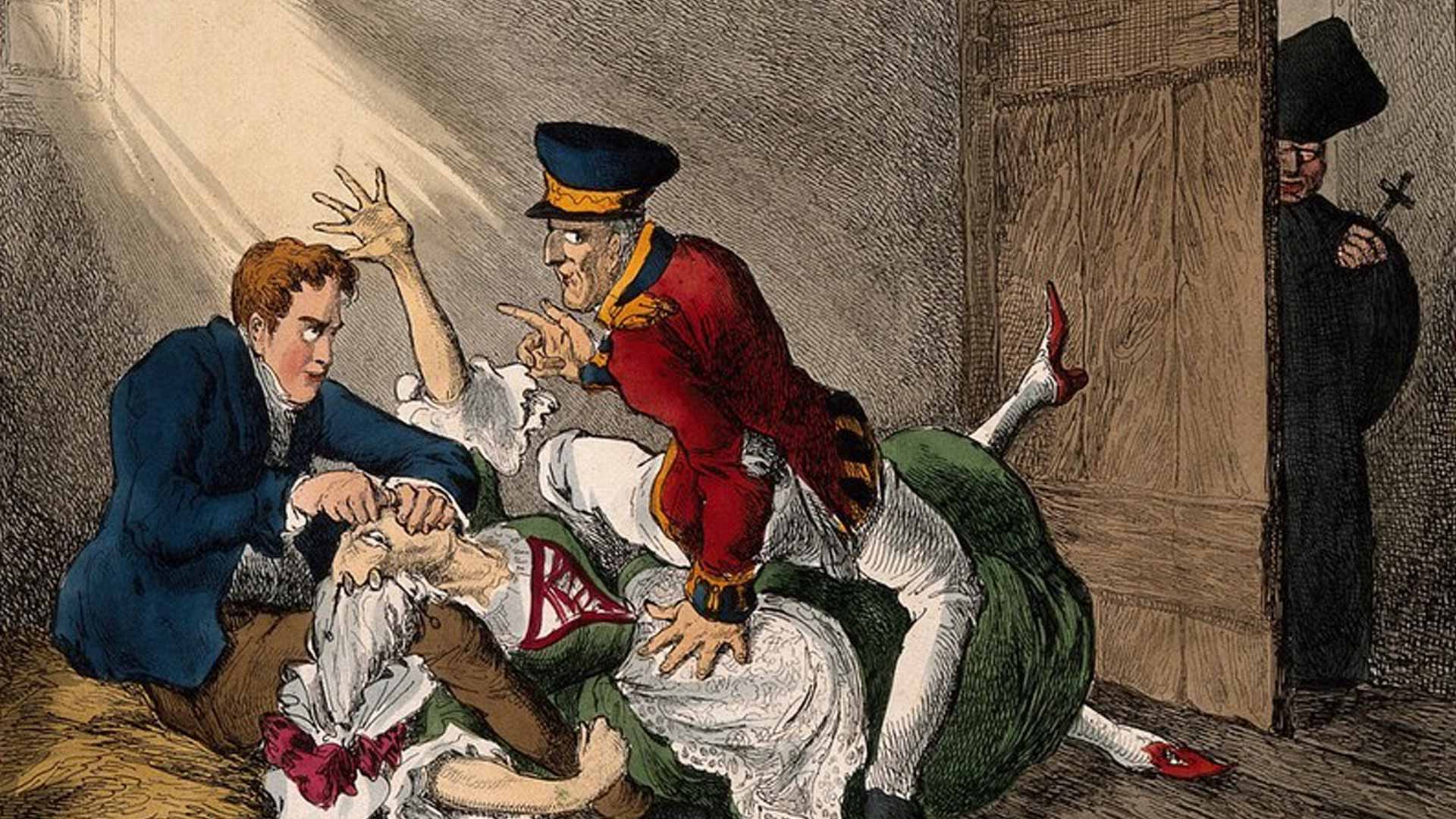
How did Burke & Hare Murder their Victims?
Burke & Hare were opportunistic killers, and the relative privacy of Hare’s lodging house provided both the trap and the bait for their impromptu schemes. It wasn’t difficult to tempt victims back to the lodgings with the promise of a warm bed and free whisky.
Potential targets could easily be found within Grassmarket taverns such as The White Hart or simply staggering along the Cowgate late in the evening. Alcohol was almost always involved, both to tempt the victims and to make them more pliant. It’s likely that Burk and Hare were themselves drunk for most of their crimes.
The pair devised a method of murder that was virtually undetectable to the forensic science of the time. It came to be known as “Burking” - a form of suffocation performed by physically restraining the victim (usually the job of Burke due to his considerable size) while covering both their nose and mouth (Hare’s grim contribution)
The process was quiet, relatively quick and left no visible wounds. It closely resembled a death from natural causes.
How did Burke & Hare get Caught?
The impending downfall of Burke and Hare and their murderous spree can perhaps be predicted from the growing pace of the murders and their increasingly brazen choice of victim. The pair no longer limited themself to those on the margins and instead began targeting well-known local characters, such as Daft Jamie.
This was compounded by disagreements between the pair – each accusing the other of cutting them out of separate deals. This all took place amid a growing suspicion of foul play among Edinburgh’s population. However, it was the murder of Margaret Docherty on Halloween 1828 that would seal the pair’s fate.
Margaret was brazenly killed in Hare’s lodging house at a time when other guests were also accommodated there. Having heard a struggle during the night and surprised by the strange and sudden disappearance of their fellow lodger, Ann and James Gray searched and found Margaret’s body clumsily hidden under a straw mattress.
The police were called and although the body had been removed to Dr Knox before they attended, nonetheless on 2nd November 1828 Burke and Hare were arrested.
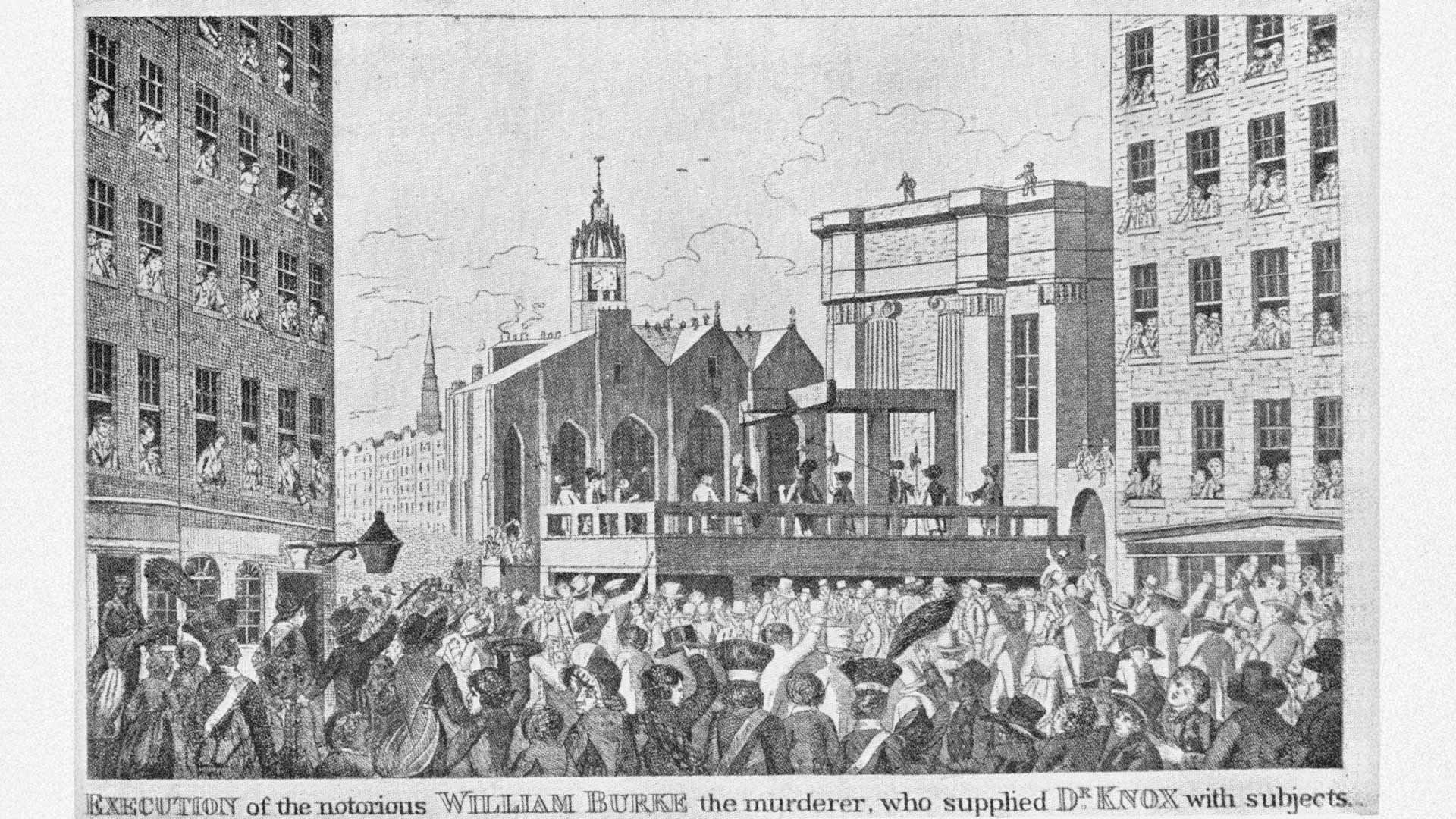
What happened to Burke & Hare?
Burke and Hare would experience very differently fates. Following their arrest, Hare was offered a generous deal by Lord Advocate, Sir William Rae - immunity from prosecution in exchange for testifying against his accomplice.
Known as turning “Kings evidence” this was a way for prosecutors to achieve decisive evidence in important cases at a time before forensics and other more sophisticated investigative techniques were available.
Burke’s trail began on Christmas eve and with Hare’s damning confessions, the evidence against him was overwhelming. Buke’s wife also stood trial alongside him but was aquited.
Burke, however, was quickly found guilty and sentenced to hang. The execution took place in January 1829 on Edinburgh’s Lawnmarket – brass cobble stones subtly mark the spot to this day.
But the sentence didn’t end with Burke’s execution. In an apt final act, his body was ordered to be publicly dissected and his remains kept on display for posterity. His skeleton still hangs in Edinburgh University’s Anatomical Museum.
Hare’s fate is less clear. He left Edinburgh shortly after the trial and many assume he returned to Ireland in an attempt to escape infamy.
What happened to Dr Knox?
Dr Knox never faced trial for his role in Burke and Hare case. His position as a leading anatomist gave him significant influence, and he vehemently claimed he couldn’t possibly have known from where the bodies originated.
He could not however escape the court of public opinion. Knox faced a severe backlash that damaged his professional standing and lost him his position in the College of Surgeons. Eventually Knox moved to London where he ended his days – buried in an unmarked grave Brookwood Cemetery in 1862.
Burke & Hare’s Legacy in Edinburgh
The crimes of Burke & Hare shocked and appalled Edinburgh at the time. They escalated existing fears of grave robbery to new heights, adding the spectre of “anatomy murder” and “burking” to things that could be lurking in the city’s narrow closes after dark.
Many feared that more anatomy murders could follow, and it was clear the situation had to change. The Anatomy Act of 1832, partially a reaction to the Burke & Hare murders, brought greater regulation to the field of anatomical study, and opened new sources of cadavers, greatly reducing incentives for body snatching.
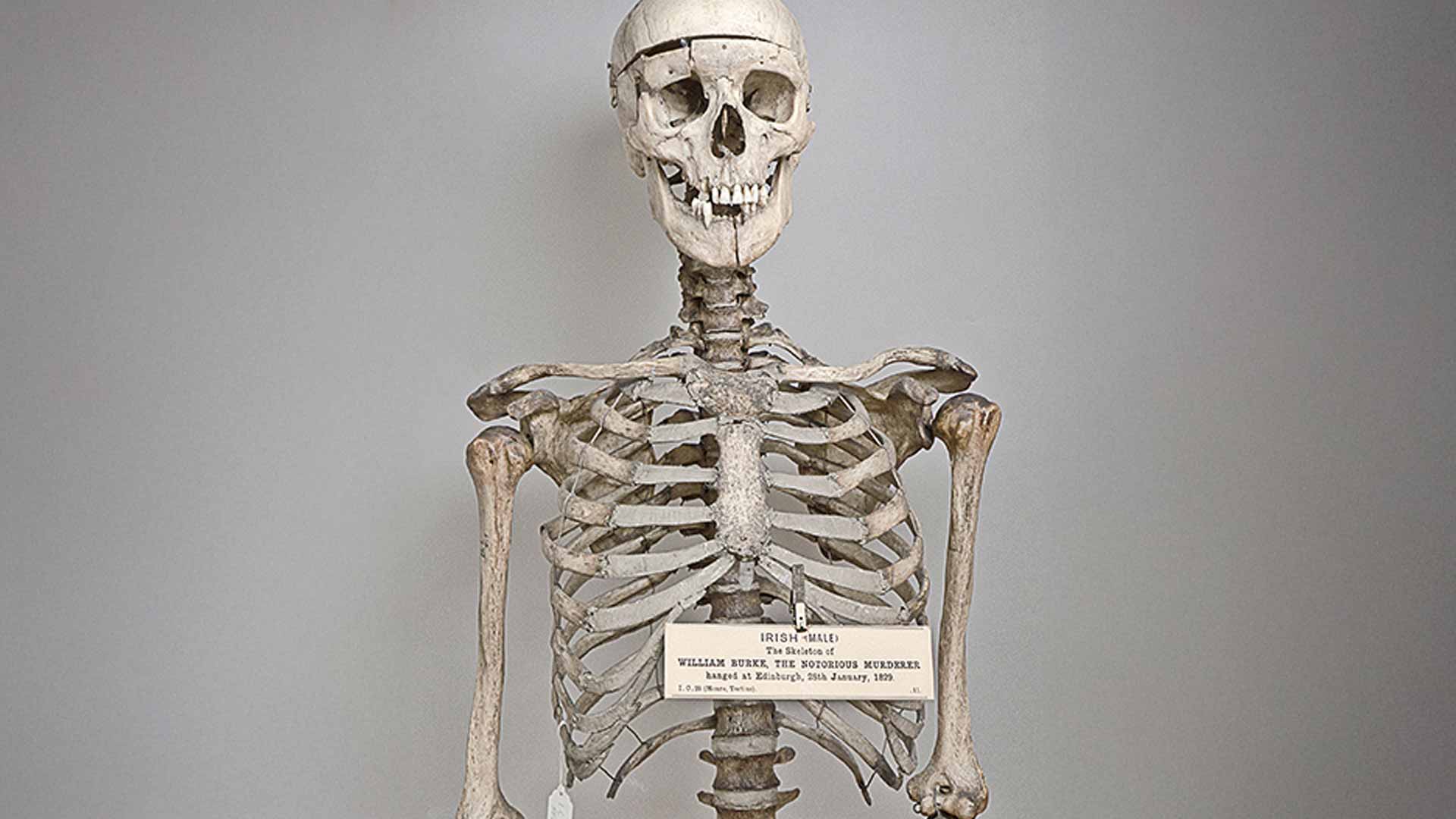
Burke & Hare Sites in Edinburgh you can visit today
The legacy of Burke and Hare still lingers in Edinburgh, woven into the fabric of the city’s identity as much as its grand Georgian architecture and Enlightenment achievements.
Today, the pair’s names remain synonymous with greed, betrayal, and the exploitation of the vulnerable, serving as a chilling reminder of how desperation and opportunity can combine with devastating consequences.
Burke and Hare continue to fascinate and horrify in equal measure, ensuring their place in Edinburgh’s darker history will never be forgotten. A selection of Burke and Hare sites that you can still visit today include:
· Tanner’s Close – the spot where Hare’s infamous lodging house once stood
· The Grassmarket – the pair’s hunting ground where many taverns remain
· Surgeon’s Square – the site of the anatomy school of Dr Knox
· University of Edinburgh Old College – the main medical school at the time
· Parliament Square – the courthouse where Burke & Hare stood trail
· The Lawnmarket – the location where Burke was executed by hanging
· Greyfriars Kirkyard – the epicentre of Edinburgh grave robbing epidemic
· The Old Medical School – the anatomy museum here displays Burke’s Skeleton
· Surgeon’s Hall Museum – housing Burke’s death masks and some of his physical remains
For a thrilling tour through all the major sites connected to the Burke and Hare story, consider ‘A Trail of Burke & Hare’, our 5-star-rated outdoor escape room in Edinburgh.
